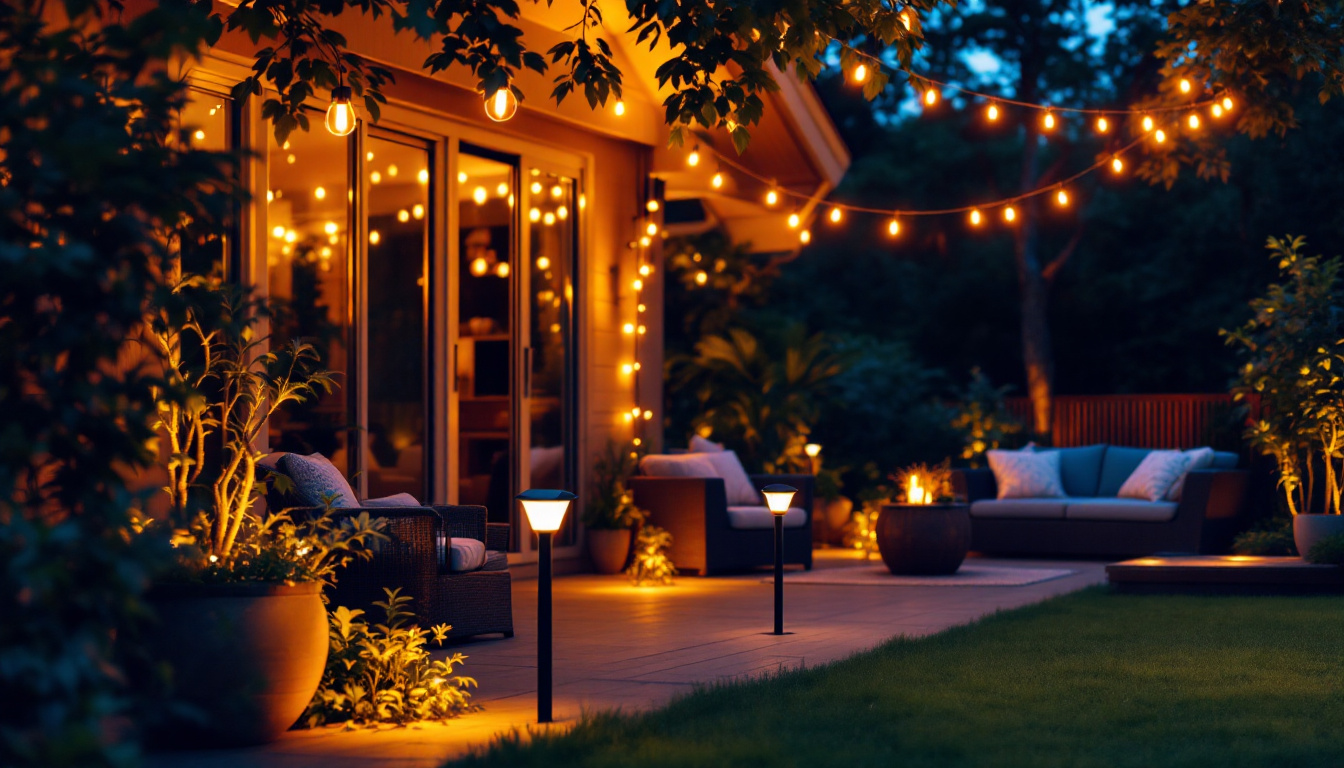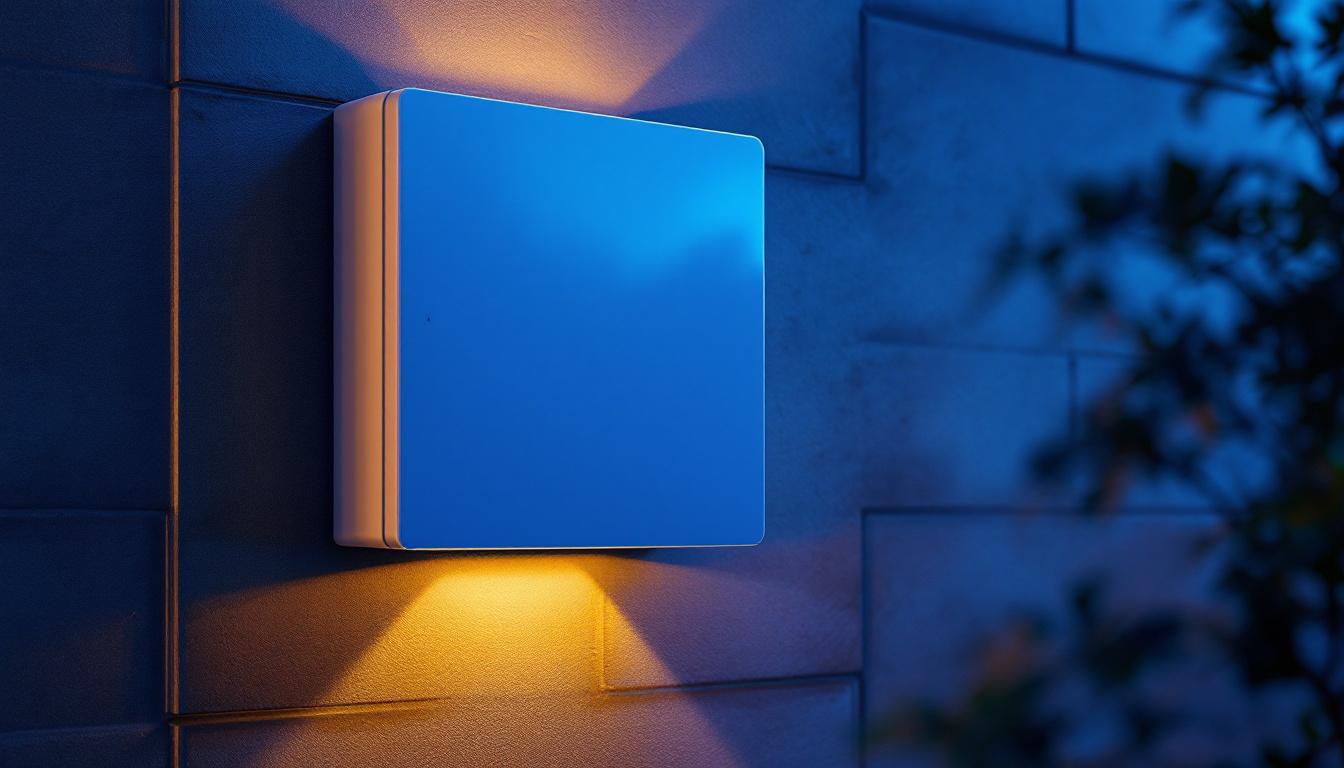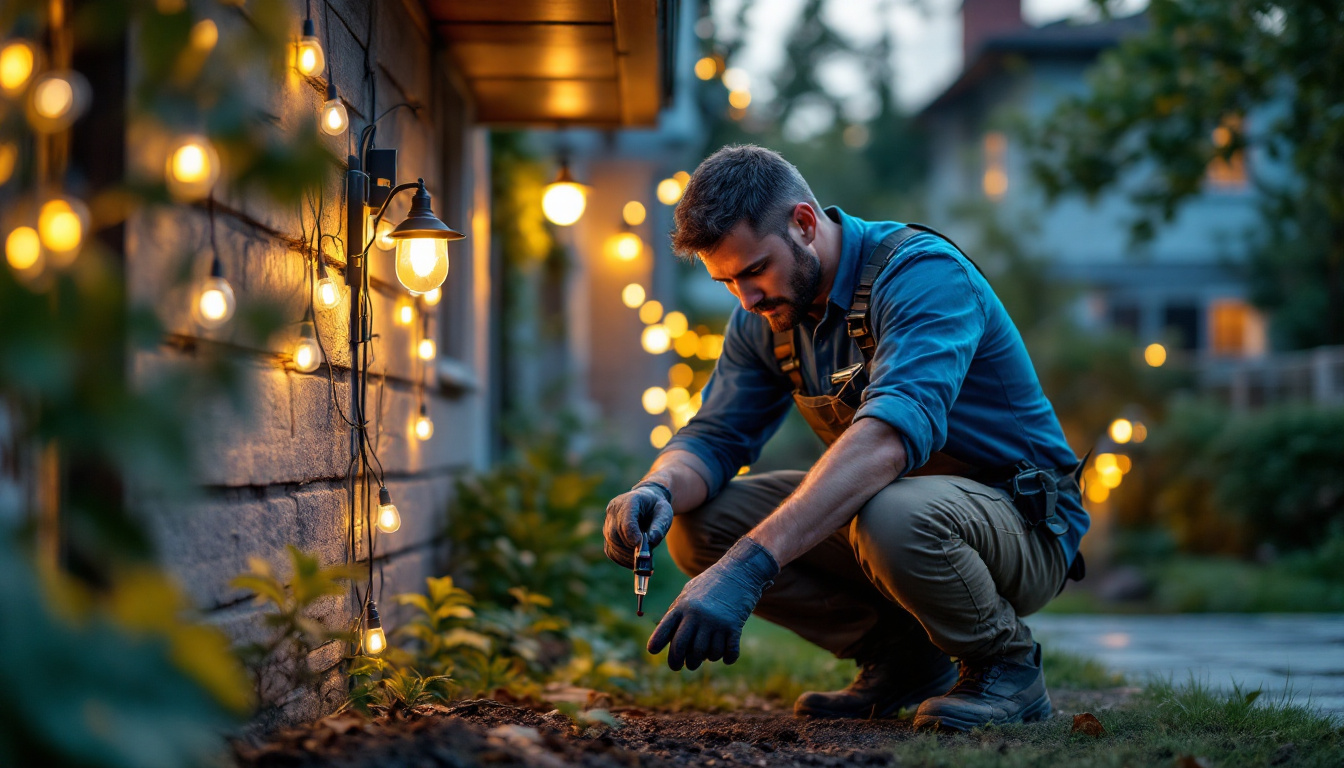
As the demand for sustainable and energy-efficient solutions continues to grow, outdoor solar lights have emerged as a popular choice for patios and outdoor spaces. For lighting contractors, understanding the intricacies of solar lighting systems is essential to providing clients with effective and environmentally friendly solutions. This article explores best practices for lighting contractors when working with outdoor solar lights on patios.
Before diving into installation and design practices, it is crucial for lighting contractors to have a solid understanding of how solar lighting technology works. Solar lights utilize photovoltaic cells to convert sunlight into electricity, which is then stored in batteries for nighttime use. This technology not only reduces energy costs but also minimizes the environmental impact associated with traditional lighting solutions. As the demand for sustainable energy sources continues to grow, solar lighting has emerged as a viable alternative, providing not only functionality but also contributing to a greener planet.
Solar lights typically consist of several key components, including solar panels, batteries, LED bulbs, and control circuits. The solar panel captures sunlight and converts it into electrical energy, while the battery stores this energy for use during the night. LED bulbs provide efficient illumination, and control circuits manage the operation of the lights, including features such as motion sensors and timers. Additionally, many modern solar lights come equipped with smart technology that allows for remote control and programming via smartphone apps, enhancing user convenience and adaptability.
Understanding these components allows contractors to make informed decisions about which products to recommend to clients. For example, selecting high-quality batteries can significantly enhance the performance and longevity of solar lights. Furthermore, the efficiency of the solar panels can vary widely; therefore, contractors should consider the panel’s wattage and efficiency rating to ensure optimal energy conversion, especially in areas with limited sunlight exposure. This knowledge not only aids in the selection process but also empowers contractors to educate their clients on the importance of quality components in achieving long-lasting solar lighting solutions.
There are various types of solar lights available, each designed for different applications. Pathway lights, floodlights, and decorative lanterns are just a few examples. Pathway lights are ideal for illuminating walkways and driveways, while floodlights can be used for security purposes or to highlight specific features in a garden. Decorative lanterns, on the other hand, can add an aesthetic appeal to outdoor spaces, combining functionality with design to create inviting atmospheres.
Contractors should assess the specific needs of each project to recommend the most suitable type of solar lighting. Factors such as the size of the area, desired brightness, and aesthetic preferences will influence the choice of solar lights. Moreover, understanding the local climate conditions can play a pivotal role in the selection process; for instance, regions with prolonged cloudy days may benefit from solar lights with larger battery capacities or hybrid systems that incorporate traditional power sources. By tailoring their recommendations to the unique characteristics of each project, contractors can ensure that clients receive the most effective and reliable solar lighting solutions for their needs.
Effective design is essential to maximize the benefits of solar lighting. A well-thought-out design not only enhances the aesthetic appeal of outdoor spaces but also ensures optimal functionality. Lighting contractors should consider several factors when designing solar lighting systems for patios.
The effectiveness of solar lights is heavily dependent on sunlight exposure. Before installation, contractors should evaluate the site to determine how much direct sunlight the solar panels will receive throughout the day. Areas shaded by trees, buildings, or other structures may require additional considerations, such as the use of higher-capacity batteries or alternative lighting solutions.
To maximize energy absorption, it is advisable to position solar panels in locations that receive unobstructed sunlight for the majority of the day. This may involve adjusting the placement of the lights or trimming back foliage that could cast shadows.
A comprehensive lighting plan is critical for achieving the desired ambiance and functionality. Contractors should consider the overall layout of the patio, including seating areas, pathways, and focal points that require illumination. The plan should detail the placement of each light fixture, ensuring that they are evenly distributed to avoid dark spots.
Incorporating layers of light can enhance the overall effect. For instance, combining ambient lighting with task lighting can create a warm and inviting atmosphere while providing adequate illumination for activities such as dining or socializing.
Proper installation is key to the performance and longevity of outdoor solar lights. Lighting contractors should adhere to best practices to ensure that the systems function effectively and meet client expectations.
Each solar lighting product comes with specific installation guidelines provided by the manufacturer. These guidelines should be followed closely to ensure optimal performance. Contractors should familiarize themselves with the instructions for each product, including recommended mounting heights, angles, and wiring configurations.
Additionally, understanding the warranty and maintenance requirements can help contractors advise clients on how to care for their solar lights, ensuring they remain functional for years to come.
Placement is critical for achieving the desired lighting effect. Solar lights should be installed at heights that maximize their illumination range while minimizing glare. For pathway lights, a height of around 24 to 36 inches is typically recommended, while floodlights may need to be mounted higher to cover larger areas.
Contractors should also consider the angle of the solar panels during installation. Proper angling can significantly enhance energy absorption, especially in regions with variable sunlight conditions.
While solar lights require less maintenance than traditional lighting systems, periodic checks and troubleshooting are essential to ensure they continue to operate efficiently. Contractors should educate clients on how to maintain their solar lights and recognize potential issues.
Dust, debris, and dirt can accumulate on solar panels, obstructing sunlight and reducing their efficiency. Regular cleaning of the panels is necessary to maintain optimal performance. Contractors should recommend a cleaning schedule to clients, emphasizing the importance of keeping the panels clear of obstructions.
In addition to cleaning, regular inspections of the fixtures and connections can help identify any wear and tear. Checking for loose wires, corroded connections, or damaged components can prevent more significant issues down the line.
Lighting contractors should be prepared to troubleshoot common issues that clients may encounter with solar lights. For instance, if lights are not turning on, it could be due to insufficient sunlight exposure, a faulty battery, or damaged wiring. Educating clients on how to diagnose these issues can empower them to resolve minor problems independently.
In cases where repairs are needed, contractors should have a plan in place for sourcing replacement parts or recommending suitable upgrades to enhance performance.
Beyond functionality, outdoor solar lights can significantly enhance the aesthetics of patios and outdoor spaces. Lighting contractors should consider creative ways to integrate solar lights into the overall design.
Using solar lights to highlight landscape features can create a stunning visual effect. Spotlights can be directed toward trees, shrubs, or architectural elements, drawing attention to the beauty of the outdoor space. This not only enhances the ambiance but also adds depth and dimension to the landscape.
Contractors can also recommend using solar lights to illuminate water features, such as fountains or ponds, creating a mesmerizing effect during the evening hours.
decorative solar lights, such as lanterns or string lights, can add a charming touch to patios. These fixtures can create a cozy atmosphere, making outdoor spaces more inviting for gatherings and relaxation. Contractors should explore various decorative options available in the market and suggest styles that complement the overall design of the patio.
Incorporating smart technology into solar lighting can further enhance the user experience. For example, programmable timers or color-changing LED options allow clients to customize their outdoor lighting to suit different occasions.
As lighting contractors, it is essential to educate clients about the numerous benefits of outdoor solar lights. By highlighting these advantages, contractors can help clients make informed decisions that align with their sustainability goals and aesthetic preferences.
One of the primary benefits of solar lighting is the potential for significant cost savings. Since solar lights rely on sunlight for energy, clients can reduce their electricity bills while enjoying well-lit outdoor spaces. Additionally, the low maintenance requirements of solar lights contribute to long-term savings.
Contractors should emphasize the energy efficiency of solar lights, as they consume no electricity from the grid. This not only benefits the client’s wallet but also contributes to a reduced carbon footprint, aligning with environmentally conscious values.
Outdoor solar lights offer unparalleled flexibility in terms of installation and design. Without the need for extensive wiring, contractors can easily install solar lights in various locations, adapting to the unique layout of each patio. This versatility allows for creative lighting solutions that can be tailored to the client’s specific needs.
Moreover, solar lights can be relocated or adjusted as the client’s outdoor space evolves, making them a practical choice for dynamic environments.
Outdoor solar lights present a valuable opportunity for lighting contractors to offer clients sustainable and aesthetically pleasing lighting solutions. By understanding the technology, adhering to best practices in design and installation, and educating clients on the benefits of solar lighting, contractors can enhance their service offerings and contribute to a greener future.
As the popularity of solar lighting continues to rise, staying informed about industry trends and advancements will further empower contractors to excel in this growing market. Embracing the potential of outdoor solar lights can lead to successful projects, satisfied clients, and a positive impact on the environment.
Ready to elevate your lighting projects with the best in solar technology? At LumenWholesale, we provide lighting contractors with the highest quality, spec-grade outdoor solar lights at unbeatable wholesale prices. Say goodbye to local distributor markups and hello to top-tier lighting solutions that meet the strictest industry standards. With our hassle-free bulk buying and free shipping, you can trust that you’re getting premium lighting at the best value — all with the convenience you deserve. Don’t compromise on quality or price. Visit LumenWholesale today and experience the ideal combination of quality, affordability, and convenience for all your lighting needs.

Discover how exterior electrical boxes for lights are revolutionizing the lighting industry by enhancing safety, boosting efficiency, and offering versatile design options.

Discover the ultimate guide for lighting contractors on selecting the perfect plug-and-play LED lights.

Explore the top challenges lighting contractors face with post solar lights, from installation hurdles to maintenance issues, and discover effective solutions to enhance efficiency and performance in outdoor lighting projects..

Discover why overhead kitchen lighting is becoming a pivotal trend in the lighting industry.